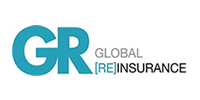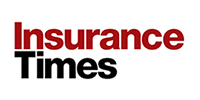Sponsored content: Samantha Young and Shelley Hawkins, communications specialists at CFH, explain why accessibility is about outcomes, not box ticking
Accessible communications are too often reduced to a compliance exercise. In truth, they are a business-critical commitment – ensuring policyholders can understand, engage with and act on the information they receive, whatever barriers they may face.

Drawing on fresh research, CFH’s new white paper An accessible future: Shaping insurance communications for all explores how demographic change, digital reliance and regulatory pressure have made accessibility a defining issue for insurers.
Channel choice matters
Channel choice is a defining feature of accessible communication. Policyholders increasingly expect to decide whether they receive physical letters, digital updates or a hybrid mix – and to switch channels whenever their circumstances change.
Evidence shows why this matters. According to JicMail data from 2025, in financial services, 99% of insurance mail is opened and 77% is read, underlining the trust and engagement that tangible formats continue to deliver.
Digital has an equally important role to play, but its strength lies in complementing print, not replacing it. The most inclusive strategies are those that give customers flexibility, whether that means a renewal pack through the post, a claims update by text message or secure documents delivered online.

This flexibility is not just best practice, it’s a regulatory expectation. Both the FCA’s Consumer Duty and the Equality Act require insurers to deliver not only fair treatment, but fair outcomes.
Through CFH’s work with insurers across the UK, we have seen firsthand how embedding accessibility in this way improves engagement, reduces complaints and strengthens customer loyalty.
True sector leaders are the ones who treat accessibility not as a slogan, but as a measurable discipline that builds trust and delivers stronger outcomes for every policyholder.
Scale of exclusion
The scale of the challenge is striking. Nearly one in four people in the UK live with a disability, according to House of Commons research, meaning more than 16 million individuals may need adjustments to engage fully with their insurer.
Disabled customers are also over 50% more likely to face barriers online, while a 2025 government survey found that 45% of people with a social impairment reported difficulties accessing financial services, including insurance.
At the same time, Scope UK projects that disabled households could face extra costs of almost £15,000 a year by 2030. Against this backdrop, even small communication barriers can deepen inequalities and increase risk.
These figures only scratch the surface. In our latest research, we explore in much greater detail how demographic change, economic pressures and regulatory expectations are converging to make accessibility a defining issue for insurers.
That full report is set out in CFH’s new white paper, which includes the very latest UK statistics on exclusion and accessibility in insurance, as well as exploration of why accessibility drives trust and outcomes, not just compliance.
The report also delves into practical adjustments that can transform policyholder experiences and how hybrid, multichannel strategies outperform single track approaches.
- To find out more and download the CFH report, click here.
Hosted by comedian and actor Tom Allen, 34 Gold, 23 Silver and 22 Bronze awards were handed out across an amazing 34 categories recognising brilliance and innovation right across the breadth of UK general insurance.



















































